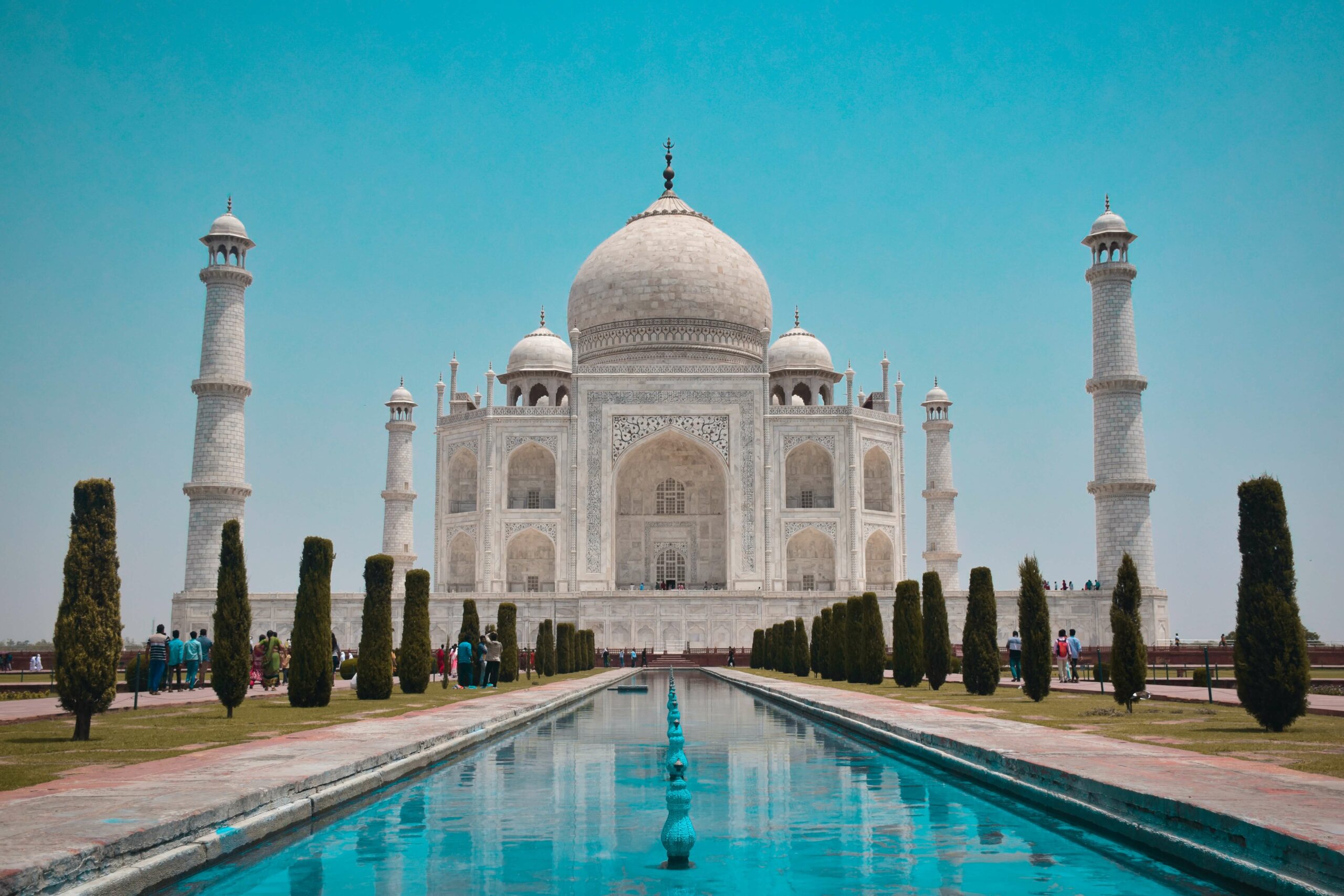Weddings are something to celebrate and the Indian culture knows exactly how to make it a true celebration. I love Indian culture and its weddings, with their many colors, delicious food, and intriguing traditions.
If you want to know all about the gorgeous weddings that people from India celebrate, you’ve come to the right place. Below, I’ve put together 15 of the most popular Indian wedding traditions and rituals for you.
If you have an invitation to an Indian wedding or you’re planning to marry someone from that culture, by the end of this list, you’ll have everything you need to know. Now, let’s get started!
15 Popular Indian Wedding Traditions and Rituals
From the Shaadi to the reception, these fifteen traditions and rituals will have you excited about attending your next Indian wedding.
- The Engagement
- The Wedding Invitations
- Barni Band-Hwana
- Haldi
- Myra Bhaat
- Sangeet
- Mehndi
- Baraat
- Kanyadaan
- The Mandap Canopy
- The Wedding Dresses
- The Groom’s Wedding Outfit
- Food
- Bhou Bhat
- Aashirwad
1. The Engagement
The engagement itself between an Indian bride and groom lasts a long time. It follows an agreement made between the two families. Sometimes, Indian families have arranged marriages. The parents may even arrange a marriage years before the couple is old enough to get married to ensure the best match.
Today, around 85 percent of Indian singles prefer marrying the person their families choose over choosing their own spouse. During the engagement period, the two families will also set a wedding date for the couple to get married.
2. The Wedding Invitations
According to Hindu traditions, close family members, relatives, and close family friends receive verbal wedding invitations in person. The bride and groom invite those closest to them personally.
Indian celebrations like weddings bring together large numbers of relatives and friends from both the groom’s and bride’s sides. The average Indian wedding can have as many as 300 to 500 guests in attendance. The people who are not as close to the bride’s or groom’s family will receive a paper wedding invitation in the mail.
3. Barni Band–Hwana
The Barni Band-hwana tradition involves tying a piece of thread between the hands of the bride and groom. The thread is called mauli. Sometimes, the groom and his parents also tie the thread between them to symbolize familial connection.
The parents of both the bride and groom bless them and pray for a safe wedding day. They ask for a long and joyful marriage.
The barni band-hwana takes place 15 days before the wedding date. Essentially, the tradition is the first step toward marriage for Indian couples.
4. Haldi
The pithi ritual, also called Haldi, takes place at the homes of the bride and the groom before the wedding. The ritual is supposed to bring good luck to the couple. Haldi includes mixing chickpea flour and turmeric rose water into pithi, and the families put it on the skin of the bride and groom.
The paste is yellow and somewhat thick to give a bright tone to the skin. It bestows good luck and blessings. The pithi tradition is popular in Hindu culture. The families of the bride and groom complete this ritual several days before the wedding.
If you are a guest at a Haldi celebration, you should wear yellow clothing to match the paste and represent the new journey the bride and groom will be taking.
5. Myra Bhaat
Myra bhaat, or the mayra ceremony, involves the maternal uncle bringing the mothers of the bride and groom the dresses they will wear at the wedding. Mayra are gifts. In English, the tradition would be called the “Maternal Uncle’s Ceremony.”
The maternal uncles will come with their wives and family while the bride’s or groom’s mother welcomes them. Along with clothing that the couple will wear during the wedding, the uncle also brings other gifts like jewelry for the mothers of the bride and groom. The gifting ritual is a wonderful way for families to come together.
6. Sangeet
The sangeet tradition is when the families and close family friends come together at the bride’s home for a celebration of music. The relatives and friends aim to get to know each other better during this party. In English, sangeet means “sung together.”
The tradition involves having everyone come together to perform a song or dance. Every person sings and dances to celebrate the wedding and the joyful union. Usually, the family members and friends sing traditional folk songs at the sangeet. Some families may even compete via these performances.
7. Mehndi
Mehndi is the most recognizable tradition in Indian weddings. We’ve all seen photos of Indian brides with beautiful Henna tattoos wearing gorgeous red wedding dresses. Mehndi involves a big ceremony with the female members of the bride’s family and her close female friends.
This ceremony takes place one day before the wedding and involves applying intricate designs to the bride’s arms, hands, and feet with henna paste. The artist will hide the name of the groom in the designs. The groom will then spends time looking for his name during the wedding, which signifies the patience necessary for a successful marriage.
8. Baraat
The baraat wedding procession is the groom’s special moment. The groom rides to the wedding on a white horse. Family members and relatives surround the groom while singing and dancing. The entire process is a fanfare celebrating the groom’s arrival.
The groom then meets the bride, her parents, and much of her family at the entrance of the venue. The bride’s mother welcomes everyone and the bride’s family offers congratulations. The bride and groom also exchange floral garlands to wear over their necks, which symbolize acceptance.
9. Kanyadaan
The Kanyadaan is the first part of the shaadi, which is the wedding ceremony. The bride’s brothers or uncles will lead her down the aisle to the groom. Then, the father gives the bride away to her husband-to-be.
Hindu tradition allows the groom to take the bride as his wife after the father gives her away. The father places his daughter’s hands into the hands of the groom. Once that’s done, the wedding ceremony will commence.
10. The Mandap Canopy
The mandap is the altar for the wedding ceremony. This canopy consists of colorful flowers, greenery, fabric, and even crystals. Sometimes, the mandap will stand on a platform. The bride and groom, their parents, and the officiant will remain underneath the mandap canopy during the shaadi.
The wedding party builds each mandap specifically for the wedding ceremony. The four pillars of the mandap altar stand for the support all four parents give to the marriage.
11. The Wedding Dresses
That’s right, there’s more than one! The wedding dress and accessories for the bride include loads of color and gold jewelry. You can expect the bride to wear a red or pink sari during the wedding ceremony. These colors symbolize good luck and joy.
The bride’s sari has jewels and crystals and authentic 24-karat gold thread for the stitching. The bride also wears jewelry on her head and neck.
The bride wears three or four different saris for multiple rituals throughout the wedding day. The dresses, known as lehenga, consist of long skirts with colorful shirts and scarves.
Unlike Western weddings, guests don’t have to worry about outshining the bride! All of the guests should dress in bright, traditional clothing as a celebration of the marriage and a wish for luck and happiness.
12. The Groom’s Wedding Outfit
The groom typically wears a long shirt that goes down to the knees. The outfit comes in various colors. The shirts can be light yellow, dark blue, or black with gold designs. The shirt is known as a kafni. In addition, the groom wears pants underneath known as pijamo. The groom can sometimes wear a turban, which is generally optional.
13. Food
Food is one of the staples of an Indian wedding. The food at an Indian wedding reception never ends. Cooks replenish traditional Indian foods throughout the night. The menu can include:
- Five main entrees
- 10 different appetizers
- Rice
- Naan bread and yogurt
- Different types of salads
You may find chicken dishes, kofta curries, paneer, and several rice dishes. For dessert, the guests feast on Western-style wedding cake and possibly macaroons. You will also see Middle Eastern desserts like halva, which is a candy made from sesame.
Sometimes weddings will have professional cooks cater their receptions. Other times, the women of the families will be in charge of cooking and spend days preparing for the feast.
14. Bhou Bhat
Even after the reception, the wedding traditions continue. The bhou bhat ritual takes place the day after the wedding. The tradition consists of a lunch served at the married couple’s home. The closest family from the bride’s side and groom’s side come to their home for a more formal welcome. The groom’s family will welcome the bride as one of them.
During the ritual, the groom pledges to take care of his wife by providing for her clothing and food. The groom then gives his bride a sari and feeds her a meal to confirm his pledge.
15. Aashirwad
The aashirwad ceremony occurs after the wedding day as well. The ceremony includes the groom’s and bride’s families visiting them in their new home. Aunts, uncles, and parents from both sides give their blessings.
The groom’s parents give the bride gifts of diamonds or gold. The aashirwad concludes the wedding and union between the couple. They are now ready to celebrate their new life together with the blessings of their friends and family.




